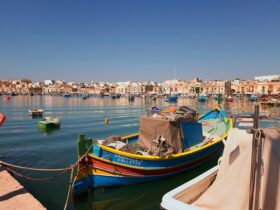Bollards are an essential feature for security, traffic control, and property protection. Whether you’re securing a storefront, directing the pedestrian flow, or reinforcing a parking lot, choosing the right bollard material is crucial for cost-effectiveness and durability. But with so many options available, how do you know which material offers the best value? In this article, we’ll break down the costs and benefits of different bollard materials to help you make an informed decision.
Understanding Bollard Costs
Before diving into materials, it’s essential to understand the different cost factors associated with bollards. These include:
- Material Costs – The price of raw materials, such as steel, concrete, or plastic.
- Installation Costs – The complexity of installation can vary significantly depending on the material.
- Maintenance and Longevity – Some bollards require regular maintenance, while others are virtually maintenance-free.
- Functionality – Fixed, removable, and automatic bollards all have different pricing structures based on their complexity.
Now, let’s analyze the most common bollard materials and how they stack up in terms of value.
Steel Bollards: The Strong and Durable Option
Cost: $100 – $500 per unit
Steel bollards are one of the most commonly used types due to their strength and durability. They are ideal for high-impact areas such as storefront protection and heavy traffic zones.
Pros:
- Highly durable and impact-resistant.
- Can be filled with concrete for added strength.
- Available in various finishes, including powder coating and galvanized steel for rust resistance.
Cons:
- Higher upfront cost compared to other materials.
- Can rust if not properly maintained.
Best For: High-traffic areas, security applications, and long-term durability.
Concrete Bollards: Aesthetic and Impact-Resistant
Cost: $300 – $1,000 per unit
Concrete bollards are commonly used for architectural and security purposes. They provide excellent impact resistance and are often found in pedestrian areas, parking lots, and government buildings.
Pros:
- Extremely durable and impact-resistant.
- Can be customized with different finishes and designs.
- Requires minimal maintenance.
Cons:
- Heavy and difficult to install.
- Not as flexible in terms of relocation or adjustment.
Best For: Areas requiring permanent security and aesthetic appeal.
Plastic Bollards: Affordable and Flexible
Cost: $50 – $200 per unit
Plastic bollards are an economical choice, often used for low-impact applications such as pedestrian guidance, bike lanes, and temporary traffic control.
Pros:
- Lightweight and easy to install.
- Cost-effective compared to steel and concrete.
- Can be flexible to prevent vehicle damage upon impact.
Cons:
- Less durable compared to steel or concrete.
- Not suitable for high-security applications.
Best For: Temporary setups, low-impact areas, and traffic guidance.
Stainless Steel Bollards: Corrosion-Resistant and Stylish
Cost: $200 – $800 per unit
Stainless steel bollards are favored for their sleek design and rust-resistant properties, making them ideal for modern urban environments.
Pros:
- Highly resistant to corrosion and weathering.
- Stylish and professional appearance.
- Requires minimal maintenance.
Cons:
- Expensive compared to other materials.
- Not as strong as concrete-filled steel bollards.
Best For: Architectural designs, commercial areas, and places with high aesthetic requirements.
Wood Bollards: Eco-Friendly and Decorative
Cost: $100 – $400 per unit
Wood bollards are an eco-friendly option often used in parks, rural areas, and decorative landscapes.
Pros:
- Natural and visually appealing.
- Environmentally friendly.
- Affordable compared to metal bollards.
Cons:
- Prone to rot and weather damage.
- Not as strong as metal or concrete options.
Best For: Parks, nature reserves, and areas with low impact requirements.
Which Material Offers the Best Value?
When it comes to choosing the best value for bollards, it depends on your specific needs. Here’s a quick summary:
- For long-term durability and security, steel or concrete bollards are the best investment.
- For cost-effectiveness and flexibility, plastic bollards are ideal for low-impact applications.
- For aesthetic appeal and corrosion resistance, stainless steel is a great option.
- For eco-friendly and decorative needs, wood bollards are a budget-friendly alternative.
Final Thoughts
Bollards are crucial for enhancing public safety and preventing accidents. Understanding common hazards in public areas and how to avoid them can help make informed security decisions.
Selecting the right bollard material involves balancing cost, durability, and functionality. If you need high-security protection, investing in steel or concrete bollards may be the best choice despite the higher upfront costs. On the other hand, if you’re looking for a budget-friendly option for temporary use, plastic bollards might be the way to go.
For a more detailed breakdown of bollard costs, visit https://www.armcodirect.co.uk/bollards/bollards-cost/. Understanding your specific needs will ensure you choose the best bollard for the job, maximising both security and value.










Leave a Reply